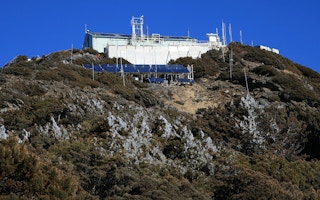For those of us outside Asia, understanding Taiwan can be complex, but its history provides a fascinating insight into just why it has become the world’s second largest PV cell producer since 2010.
To continue reading, subscribe to Eco‑Business.
There's something for everyone. We offer a range of subscription plans.
- Access our stories and receive our Insights Weekly newsletter with the free EB Member plan.
- Unlock unlimited access to our content and archive with EB Circle.
- Publish your content with EB Premium.
Located just 180 kilometres to the southeast of mainland China, Taiwan (historically known as Formosa) has a proud indigenous heritage and strong self-identity. Since the 17th century, the Dutch, Spanish, Japanese and Chinese have all occupied parts of Taiwan and annexed this island nation to varying degrees.
However, many the majority of Taiwan’s population have Han Chinese heritage as a result of immigration over these centuries. Since the mid-1940s it has had a a strongly Chinese identity; including the retention of the official title of Republic of China (as distinct from the People’s Republic of China).
In a nutshell, the political and legal status of Taiwan remains somewhat ambiguous with The People’s Republic of China (PRC) claiming that the Taiwan’s “Republic of China” (ROC) government is illegitimate, referring to it as the “Taiwan Authority”. The ROC, however, with its own constitution, independently elected president and armed forces, continues to view itself as a sovereign state.
Either way, this beautiful, mountainous, island nation has become a technological powerhouse in Asia. Driven initially by Japanese influences prior to World War 2, it has developed a highly successful semiconductor industry including wafer foundries, Integrated Circuit (IC) packaging and testing industries and was considered the world’s number one in 2011 in terms of IC revenues.
“
Fast forward to 2012 and the beginning of trade tariffs on Chinese made PV products in some countries. With deep historical and business ties to China but technically an independent status, the importance of Taiwan’s PV manufacturing sector took a huge leap forward.
The Taiwanese semiconductor industry developed an early vertical integration model (upstream, midstream, and downstream sectors) including silicon materials and silicon wafering; midstream IC design, IC manufacturing, and IC packaging industries; and downstream computer, cellular phone, and consumable electrical product companies. The transition from semiconductor to photovoltaic industries was a therefore a logical and natural progression for Taiwan and explains why it has become so enormously important.
Fast forward to 2012 and the beginning of trade tariffs on Chinese made PV products in some countries. With deep historical and business ties to China but technically an independent status, the importance of Taiwan’s PV manufacturing sector took a huge leap forward.
One example of the Taiwanese PV industries rise to PV success is WINAICO. WINAICO’s parent company is Win Win Precise Material Co Ltd who established themselves in 2003 as a supplier and marketer to the semi-conductor industry. By 2007, it had created Winergy Solar and soon afterwards WINAICO, establishing a network of global sales offices and joint ventures to develop, market and deploy its PV technologies.
Despite – or perhaps because of – their background in semiconductor equipment – WINAICO has carefully selected a strategic position in the PV value chain. Rather than going doing down the vertical integration path (from upstream silicon production to midstream module production to downstream deployment) Winaico strategically chose to specialise in module fabrication and large project deployment, providing several core advantages. Firstly, they know what a great fab line should look like, without having to make the investment and thus how to carefully select material suppliers. Secondly, they keep investments under control in a market that is volatile and perilous, to say the least. Thirdly, they can pick and choose the best raw materials from different suppliers at different times to leverage the best deals and technologies.
Across the PV industry specialisation in specific parts of the value chain (rather than total vertical integration) seems to be one of the recent keys to financial security, with many competitors off-loading business units in recent times to reduce exposure.
It is this focus and flexibility that arguably provides WINAICO with the ability to produce a broad range of products ranging from low cost to ultra-high performance products and rather uniquely, (compared to their Chinese peers) even offer in-built energy yield insurance on several product lines.
Locally in Australia, WINAICO established an office in 2012 and engaged industry veteran’s Blair Paster and Kathleen Ryan to build its local presence. The local entity appears to have built a strong sales base and recently announced an expansion of the regional office’s function as the Asia Pacific hub.
WINAICO has also recognised that rural and indigenous projects are a growth segment and has partnered with Northern Territory-based Ogden Power to develop energy solutions for indigenous communities, with a view to exporting Australian know how to Pacific regions in the future. I, for one, applaud any company who invests in Australia rather than simply dumping containers of low priced panels.
Taiwanese solar companies will be very interesting to watch in coming years as they leverage the nations experience in semiconductor technologies and close ties to China in the rapidly growing Australian solar market.
This post originally appeared here.









